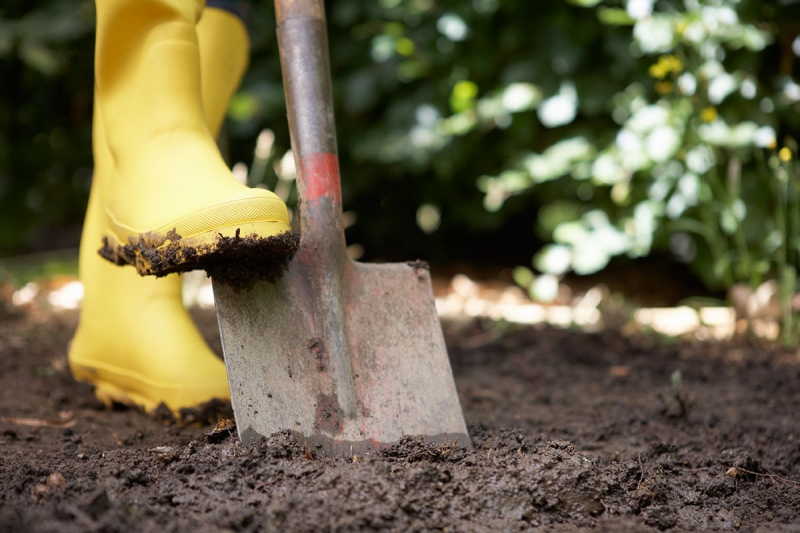What is Double Digging Anyway?
Double digging is not a motivating concept. That's what machine cultivators are for, after all, right?! - to save gardeners from a sore back and bleeding blisters. Paradoxically, repeated machine cultivation can cause the situations that warrant double digging.
The reasons for, and the definition of, double digging are widely misunderstood. Double digging is not doing the same task twice; it is the equivalent of deep tilling or subsoil plowing. To double dig is to remove a layer of topsoil to "spade depth" - 8 in. to 12 in., roughly the length of a spade's blade--and set it aside. Then, the next 8-in. to 12-in. layer of soil, the subsoil, is loosened, aerated, and often augmented by compost, aged manure, leaf mold, or peat moss. Organic matter improves the drainage of heavy clay soils and helps light sandy soils hold moisture longer. Finally, the top layer is put back in place.
Why Put Myself Through Grief?
The reasons for double digging are twofold: to relieve subsoil compaction and to refurbish the topsoil. Soil particles in compacted subsoil, also known as hardpan, are tightly packed, with few air pockets. What causes compaction can be either a naturally occurring layer of clay and silt, or repeated use of machinery such as shallow tillers or construction equipment that compresses the soil underneath. Plant roots and moisture can't penetrate hardpan; poorly draining water and stunted plant growth are the result.
Double digging mitigates these problems by breaking up the hardpan and improving root penetration and drainage. Plants grow best in soil that has been loosened before planting to allow ready penetration of the two things roots need most: oxygen and water. Heavily and frequently cultivated topsoil not only leads to compaction but also tends to lose its mineral and nutritive value over time, as soil particles give up their stored minerals to plant growth. Occasionally, it is necessary to replace the soil particles in the topsoil with fresh soil from underneath. Double digging brings deep soil particles closer to the surface where plants' feeder roots can reach them.

